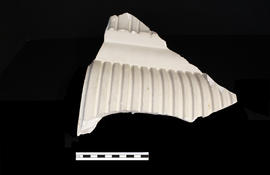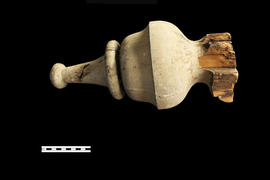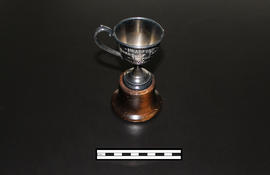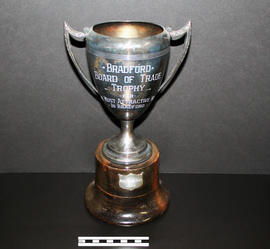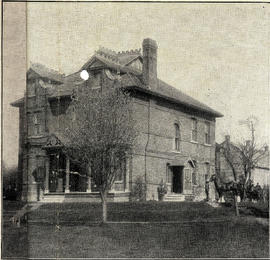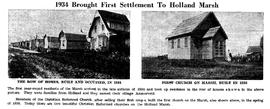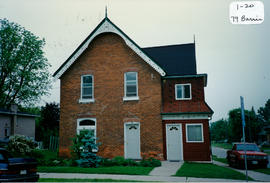The Davey House is a large, two-storey house located at 79 Barrie St. (on the northeast corner of Barrie St. and Scanlon Avenue). It was built in the Gothic Revival style around 1880. There was a two-storey, frame barn on the back of the lot originally. Bill Davey and his family - Minto "Scott", Leona, Oswald, Archie, and Margaret - lived here many years ago. Bill was a carpenter’s helper for local builder A.J. Saint. Bill was also a noted lumberman, butcher, and hunter. He owned a slaughterhouse on the west side of Simcoe St. (Picadilly Hill) and a butcher shop at the corner of Holland and Moore Streets. Bill died at his hunt camp in his nineties.
The ‘L’-shaped house sits quite near the street line. It has large window openings with high floor to ceiling heights and a medium-pitched, gable roof. Elaborately-carved bargeboard trim and finials, a coloured glass, arched transom over a main-floor window, and the original wood lug sills remain. The house has wood frame construction and a stone foundation. Deterioration of the brick veneer at the grade level indicates a lack of adequate, subsurface drainage. An original rear, one-storey addition with a simple shed roof (once used as a summer kitchen) still remains. According to the 2000 inventory, the replacement windows, doors, and the two-storey addition at the entrance are unsympathetic with the original building. (1, 2, 3)

